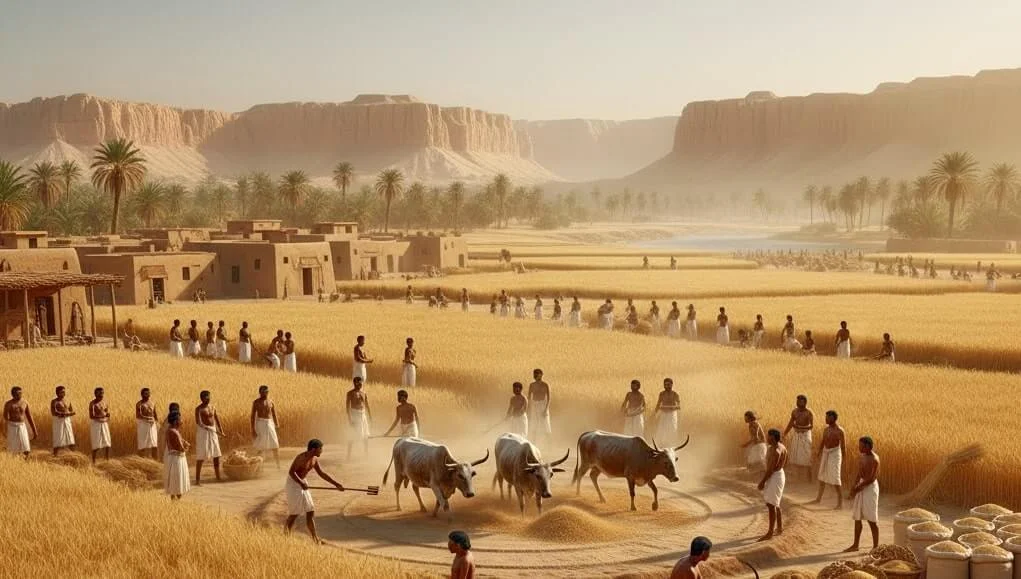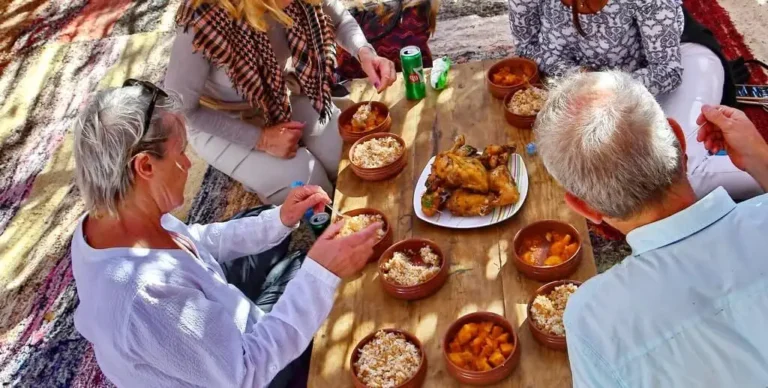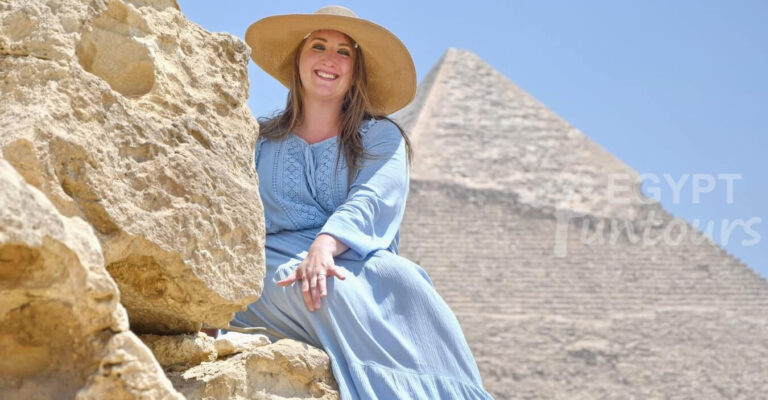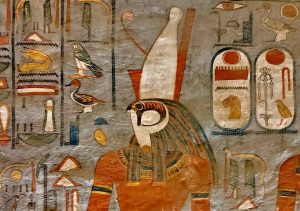We often see Egypt’s glory in its golden pharaohs, massive temples, and complex gods. But who truly powered this civilization? The answer is the ancient Egyptian farmer. For over 3,000 years, they made up more than 80% of the population. They were the engine of the empire and the foundation of all ancient Egyptian jobs.
The ancient Egyptian farmer did not use a calendar like ours. Their life was governed by the Nile River and its three powerful ancient Egyptian seasons. This rhythm of flood, planting, and harvest dictated their entire year, their work, their taxes, and their family life. Let’s follow a year in their life.
Life in a Mud-Brick Village

The typical farmer did not live in the grand cities. They lived in small, crowded mud-brick villages nestled along the edge of the fertile Nile valley. Their homes were simple, rectangular houses made from bricks of Nile mud and straw.
These homes usually had just a few rooms with high windows to let heat escape. Families slept on reed mats, sat on low wooden stools, and stored their grain in clay pots. Life was communal, public, and tied directly to their neighbors and the land they all worked.



























